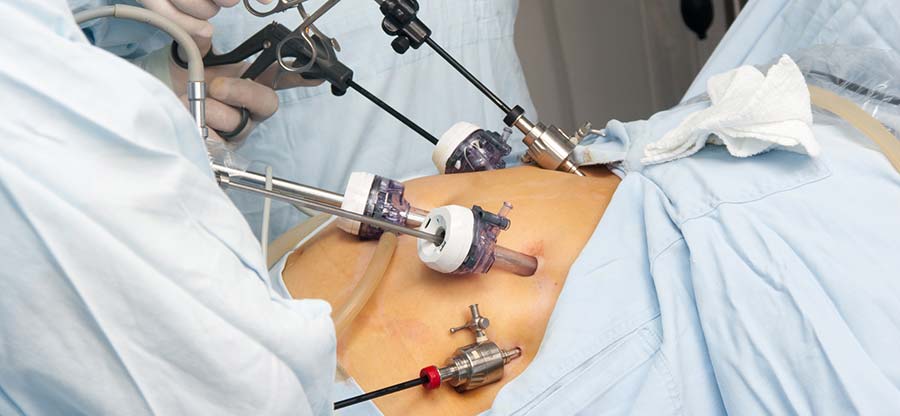Minimally invasive surgery is becoming more and more common in hospitals. These procedures are performed through tiny incisions instead of one large opening. Because the incisions are small, patients tend to have quicker recovery times and less discomfort than with conventional surgery all with the same benefits. “Most of the interventional procedures tend to require only local anesthesia, hospital stays are very short, with patients frequently going home on the same day. MIS is bliss for the patients who are unfit for surgery.” says
In minimally invasive surgery, doctors use a variety of techniques to operate with less damage to the body than with open surgery. In general, minimally invasive surgery is associated with less pain, a shorter hospital stay, and fewer complications.

Laparoscopy surgery done through one or more small incisions, using small tubes and tiny cameras and surgical instruments — was one of the first types of minimally invasive surgery. Another type of minimally invasive surgery is robotic surgery. It provides a magnified, 3-D view of the surgical site and helps the surgeon operate with precision, flexibility, and control.
Continual innovations in minimally invasive surgery make it beneficial for people with a wide range of conditions. If you need surgery and think you may be a candidate for this approach, talk with your doctor.
Types of minimally invasive surgery
Surgeons perform many minimally invasive surgeries, including:
1) Adrenalectomy to remove one or both adrenal glands
2) Anti-reflux surgery, sometimes called hiatal hernia repair, to relieve
3) gastroesophageal reflux disease (GERD)
4) Cancer surgery, for example, to destroy a tumor
5) Colectomy to remove parts of a diseased colon
6) Colon and rectal surgery
7) Ear, nose, and throat surgery
8) Endovascular surgery to treat or repair an aneurysm
9) Gallbladder surgery (cholecystectomy) to remove gallstones that cause pain
10) Gastroenterologic surgery, including gastric bypass
Why it’s done
Minimally invasive surgery emerged in the 1980s as a safe and effective technique to meet the surgical needs of many patients. In the last 20 years, many surgeons have come to prefer it to traditional (open) surgery, which requires larger incisions and, usually, a longer hospital stay.
Since then the use of minimally invasive surgery has expanded widely in many surgical specialties, including colon and lung surgery. Talk with your doctor about whether you would be a good candidate for this surgical approach.
Benefits of minimally invasive surgery
1) Fewer scars on the outside
Scars from minimally invasive surgery are much smaller than in traditional open surgery. Laparoscopy involves 1 incision in the belly button and 1 to 3 others in the lower belly. These incisions are usually 1/4-1/2 inch long. Hysteroscopy leaves no scar because the instrument goes through the natural opening (neck of the womb) from the vagina into the uterus.
2) Fewer scars on the inside
In general, all surgery can cause adhesions or scar tissue inside your lower belly abdomen). These scars can cause pain, problems with getting pregnant, or bowel blockage. Minimally invasive surgery may cause less scarring.
3) Quicker recovery
Minimally invasive surgery doesn’t usually require a woman to stay overnight in the hospital, compared with 2 to 4 days after open surgery. This reduces the risk for problems such as blood clots in the legs or infection.
4) Less pain, less medication
Because incisions are smaller, minimally invasive surgery is less painful than open surgery. This means that women need less pain medication and recover more quickly.
